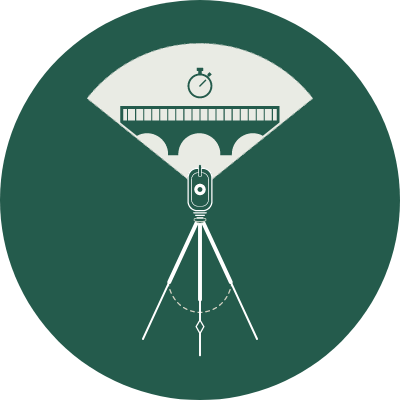In this article, we’ll delve into the essential equipment used to complete monitoring surveys.
When it comes to surveying, accurate and reliable equipment is key when ensuring precise measurements and data collection.
In this article, we’ll delve into the essential equipment needed to complete monitoring surveys – movement gauges, reflectorless total stations, and micrometers.
Movement gauges
Movement gauges play a pivotal role in monitoring structural shifts and deformations.
They measure changes in position or displacement, providing invaluable data for our clients. When using movement gauges during monitoring surveys, it’s crucial to establish a baseline reference point and regularly compare subsequent measurements to detect any deviations.
Routine calibration is also key to maintaining accuracy in movement gauges. Periodic checks help ensure that the instruments remain reliable for prolonged monitoring projects.
Also, as these gauges are often exposed to challenging environmental conditions, selecting durable and weather-resistant models is essential for long-term usage.
Reflectorless total stations
Reflectorless total stations enable distance measurements without the need for a prism reflector.
These instruments are particularly useful when monitoring areas where accessing reflections may be difficult- such as construction sites, mining operations, and infrastructure projects.
Regularly calibrating and updating the firmware of reflectorless total stations is essential to
maintain accuracy over time.
3D Laser Scan
Laser scanning can produce a model of a whole structure, rather than just specific points with a total station. By scanning the structure at regular intervals, point clouds generated can then be compared and heat maps produced showing movement over time.
Micrometers
Micrometers, known for their precision in measuring small distances, play a crucial role in monitoring minute changes in structures or components.
During monitoring surveys, micrometers are often employed to measure deformations, expansions, or contractions in specific elements. Understanding the resolution and repeatability of micrometers is vital for obtaining reliable measurements.
Regular maintenance of micrometers involves cleaning, lubrication, and calibration checks. It’s essential to store micrometers in controlled environments to prevent temperature or humidity fluctuations that could affect their accuracy.
Utilising digital micrometers enhances ease of use and allows for quick, accurate readings, especially in time-sensitive monitoring projects.
When it comes to monitoring surveys, trust Landform Surveys.
Effective monitoring surveys rely heavily on the proper use and maintenance of equipment such as movement gauges, reflectorless total stations, laser scanning and micrometers.
These tools provide invaluable data for engineers and surveyors, contributing to the success of various projects.
By incorporating routine calibration, training, and selecting instruments suited to environmental conditions, surveying professionals can ensure the accuracy and reliability of their monitoring efforts.
At Landform, we can offer highly accurate data regarding the movement of structures that will meet your needs. Whether that be in real-time or long-term, we can work with you to decide what solution will work best for your project.


